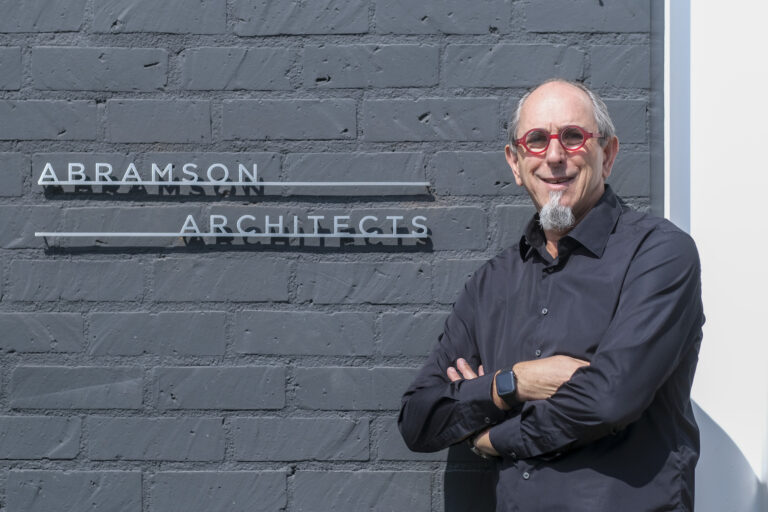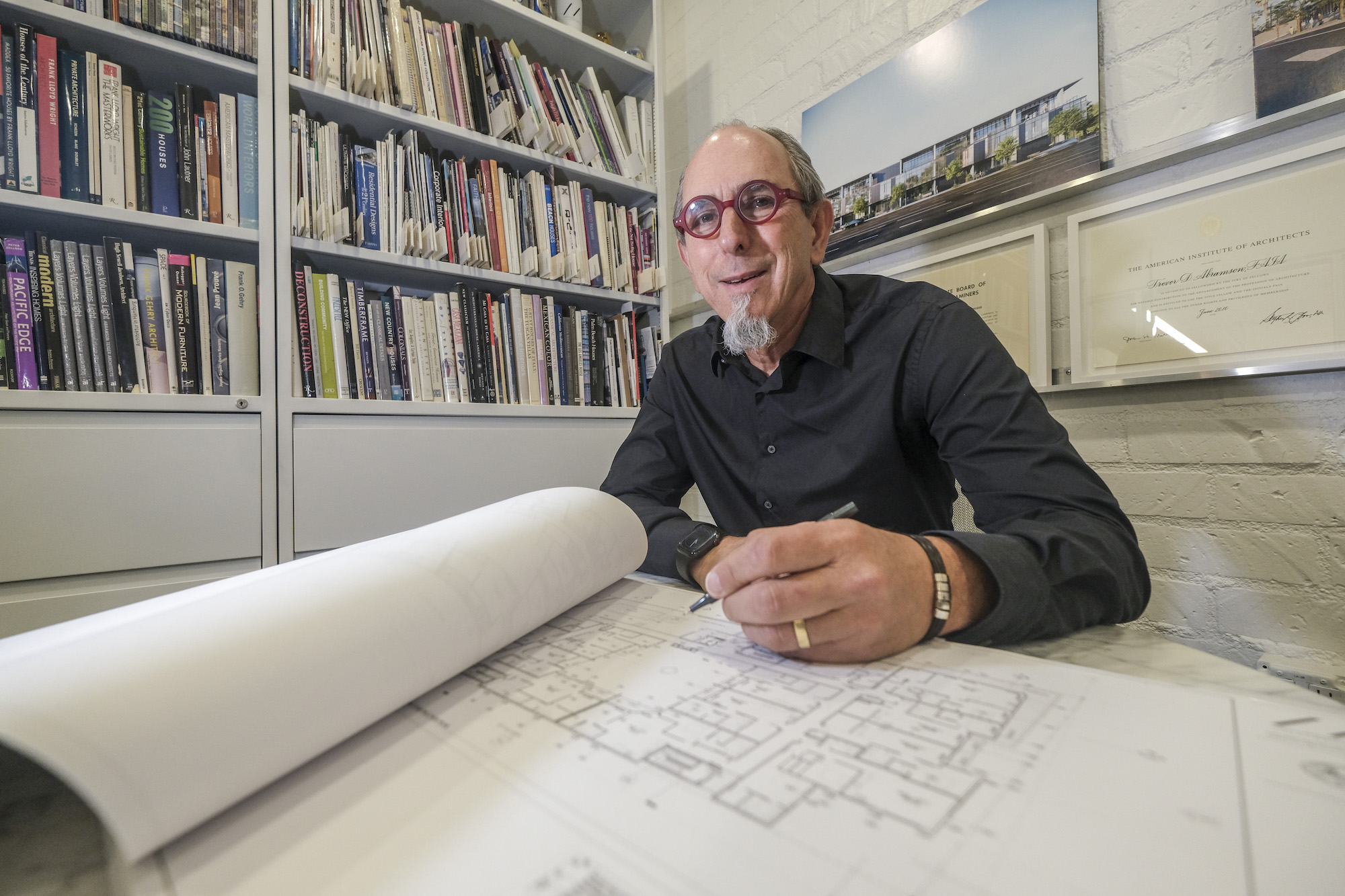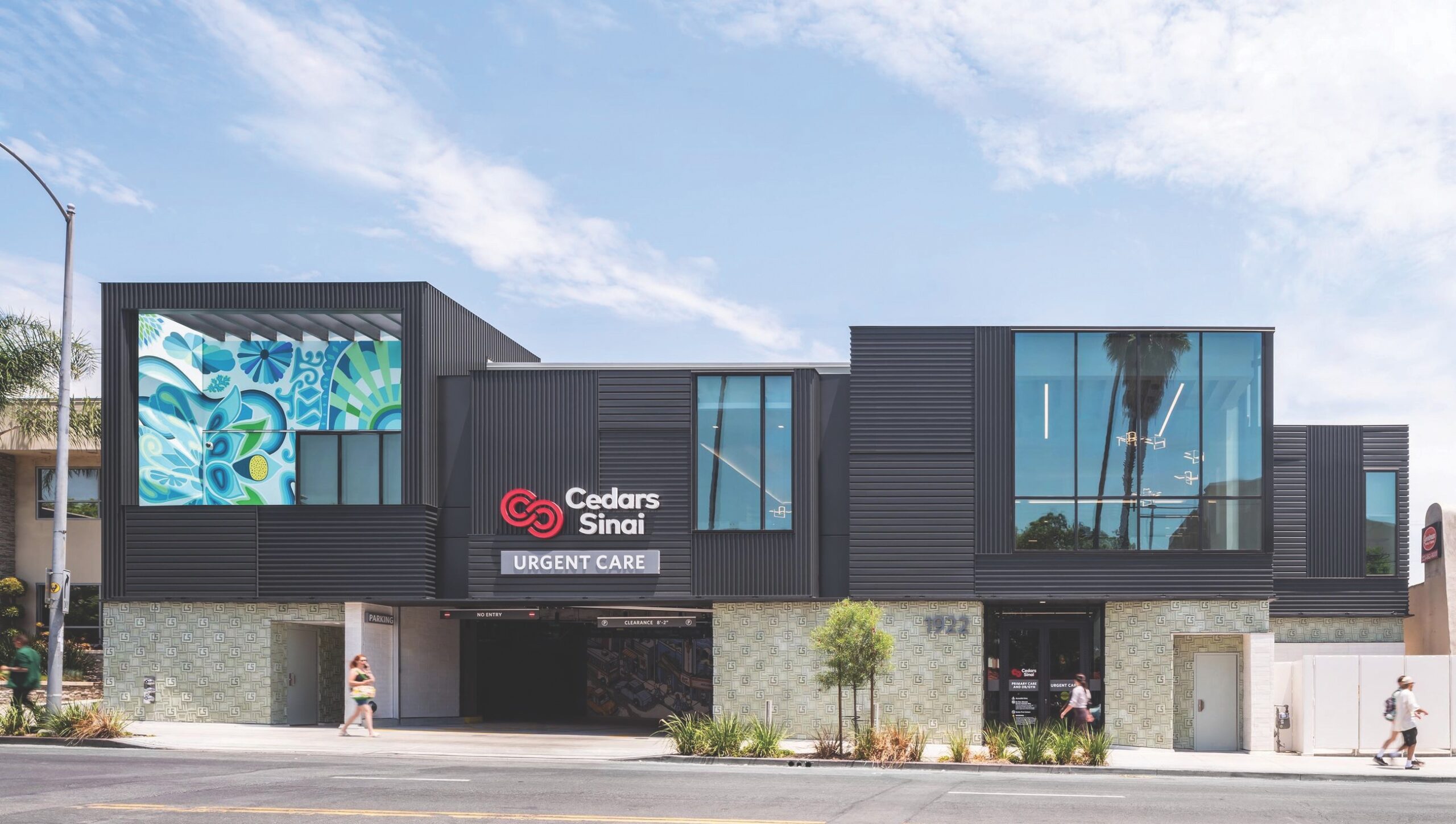
Earlier this month, Abramson Architects acquired San Diego-based Moon Mayoras Architects, a boutique firm specializing in hospital and related health care inpatient facility design. This expertise complements Abramson Architects’ existing focus on design of medical space for outpatient treatment.
This first-ever acquisition in Abramson Archtects’ 36-year history is a key component of the firm’s strategy to grow its presence in health care-related design, a market that has exhibited consistent growth as other practice areas have proven more cyclical in nature.
“Health care design is less affected by recession: people age and get sick and therefore keep coming to seek care,” said Trevor Abramson, an architect and founding principal of the firm that bears his name.
Even before the acquisition, Abramson said about one-third of the firm’s work had been in health facility design, though mostly in small medical office and outpatient treatment facilities. The other two-thirds was split between a wide range of practice areas, from single-family residential and multifamily to small retail to religious institutions.
Abramson said he wants to keep the health care-design work at around one-third of total billings going forward; he acknowledged that would also mean substantial growth over time in the firm’s other practice areas.
Abramson Architects is not the only firm beefing up its health care-design practice, according to one local industry leader.

“The health care market is hot right now,” said Carlo Caccavale, executive director of the Los Angeles chapter of the American Institute of Architects. “There has been big investment in clinics that keep popping up everywhere, and of course there’s a lot of renovation and replacement work going on at hospitals. This means more and more work for architects.”
Caccavale said there has also been a trend toward repurposing existing non-medical office buildings for health care.
Residential roots
Abramson, a native of South Africa, came to the Los Angeles area in his late teens with his family; shortly after arriving he attended USC, where he received a bachelor of arts in architecture. He then went to New York to obtain a master of arts in architecture from Columbia University. After spending a couple of years working for architectural firms in the Big Apple, he moved back to Los Angeles and joined a couple of major local architecture firms, including Welton Becket Associates, known for its design of major local landmarks such as the Capitol Records building in Hollywood and the Music Center in downtown.
Ground Zero
In 1987, Abramson decided to hang out his own shingle at a small office in Culver City. His first commissions were for a pair of single-family homes and a kitchen remodel.
“I started from ground zero, bootstrapping from one commission to the next,” Abramson said. “No outside money was involved.”
A few years in, one of his residential clients also owned some office space and asked Abramson to redesign it. “That’s how we got into the office market.”
Abramson Architects also developed a specialty designing new or renovated spaces for religious institutions, including First Presbyterian Church in Encino and, more recently, Valley Beth Shalom synagogue, also in Encino.
At the latter, Abramson Architects designed a new 15,000-square foot building to house a gym and a library, as well as renovations for a small daily prayer chapel. The firm is currently working on a renovation of the main sanctuary, which is scheduled for completion early next year.
“The gym and library building they designed for us turned into such an exciting and attractive building that it has made a big change on our campus,” said Bart Pachino, director of new building projects for Valley Beth Shalom. “That’s when we decided to keep Abramson Architects and have them work on the other renovation projects.”
But it is Abramson Architects’ work for Beverly Grove-based Cedars-Sinai Health System that has had a more significant impact on the company and its current trajectory. Abramson said his work for Cedars started about 15 years ago with an existing client who owned a commercial building in Culver City. The client was seeking to lease out the building to Cedars-Sinai for an urgent-care facility and chose Abramson Architects as the design firm.
“We ended up designing much of that space from the ground up,” he said.
By the time that building was completed, in 2012, Abramson had formed relationships with the design and construction teams at Cedars, which the firm then parlayed into design contracts for office space in other buildings throughout the region for doctors who worked with Cedars-Sinai.
Abramson said that it was through this work that he realized the lucrative nature of the health care-design market.

From the perspective of Cedars-Sinai, Abramson Architects’ penchant for attention to detail, its unique designs and its willingness to see projects through from initial conception to completion of construction is what prompted the hospital giant to turn to the company again and again, according to Alicia Wachtel, executive director of design and construction for Cedars-Sinai Health System.
“They have a fresh perspective on how they translate our needs to clinical space,” Wachtel said. “It’s not cookie-cutter work: each space has its own unique design, even if it’s in keeping with the overall Cedars theme.”
Wachtel cited one project in particular, involving a facility on L.A.’s Westside.
“There were two separate suites,” she said. “Abramson (Architects) decided to put all the patient-treatment services in one suite and all the support services in the other suite, which made for a much more flexible space for us.”
Regulatory hurdle
Abramson said that as the firm has done more and more medical outpatient space design, he realized the company was missing out on a more lucrative related market: hospital inpatient facility design work. Large hospital inpatient towers can cost more than $1 billion to build or renovate; the major design firm on one of those projects can easily rake in several million dollars in billings over the life of the project. (By comparison, Abramson Architects’ total billings last year were just shy of $8 million.)
And with seismic retrofit deadlines looming by the end of this decade, there’s a ton of work taking place in this area.
But inpatient projects are subject to oversight and regulation by the state Department of Health Care and Information, formerly known as the Office of Statewide Health Planning and Development, or OSHPD.
“It’s highly regulated work, and in order to get that work, you need to demonstrate expertise in dealing with both OSHPD and the extensive regulation codes,” Abramson said.
He further explained that his firm faced a chicken-or-egg problem if it tried to get that expertise on its own. “Hospitals won’t hire you unless you have that experience, but you have to get hired for hospital projects to get that experience.”
Abramson said the simplest way around this conundrum was to go out and acquire a company with that expertise. “That’s exactly what we did when we found Moon Mayoras,” he said. “Now, with their deep bench in this area, we can start competing for hospital (inpatient) projects. I can’t say we’ll get one of those billion-dollar hospital tower projects right off the bat, but we intend to get there.”
One of Moon Mayoras’ signature projects was a 251,000-square-foot, five-story, $175 million inpatient care unit for Eisenhower Medical Center in Rancho Mirage, which was completed in 2010.
The Moon Mayoras acquisition also boosts Abramson Architects’ geographic profile.
Abramson explained that the company in the past had done work in other regional and state markets, but only on a one-off basis when one of its existing clients has had a project outside the Los Angeles region.
“Now, with the Moon Mayoras office we’re keeping in San Diego, we can use that as a base to get more work in that market,” he said.
Backyard work
Abramson said the company has no near-term plans to acquire other architectural firms or open new offices in other regions. Instead, he said, one of his near-term goals is to do more work in the West Adams neighborhood surrounding the company’s office. He said the firm moved its headquarters in 2020 to West Adams from Culver City as rents in rapidly gentrifying Culver City grew unaffordable.
Abramson Architects played a considrable role in Culver City’s renaissance, designing local landmarks, such as the 85,000-square-foot Brick & Machine creative office complex that opened last year.
“West Adams is an up-and-coming neighborhood; I see it like Culver City was 30 years ago,” Abramson said. “There’s a lot of renovating and rebuilding going on in the area, especially after the (Metro) Expo line opened. We want to be a part of that.”
